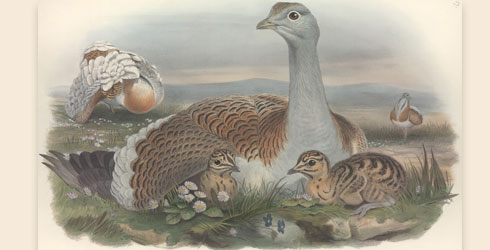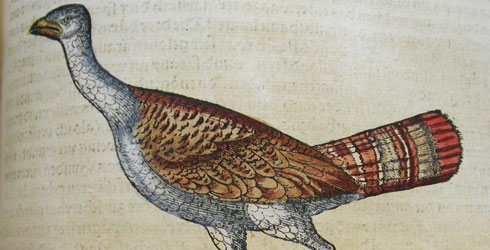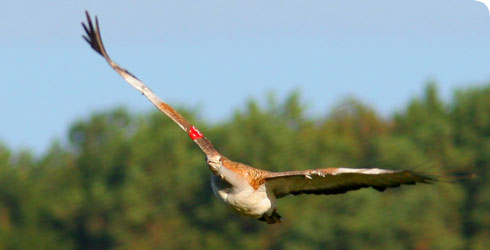Otis tarda (great bustard)
Its large size, striking plumage and spectacular displays make the great bustard one of the world’s most impressive birds.
However, its future is uncertain as its widespread, fragmented populations decline rapidly under the impact of global agricultural expansion and intensification.
This bird was once commonplace in the UK, but became extinct in Britain in the 1830s. A unique conservation project is currently underway to reintroduce this great bird to Wiltshire in southern England.
Species detail
-

Taxonomy
Male great bustards stand over a metre tall and have distinctive plumage when breeding. Find out more about Otis tarda, the sole member of the genus, Otis.
-

Distribution
Otis tarda has a wide distribution, but has disappeared from parts of Europe including Britain. Discover where you might spot it and what it likes to eat.
-

Biology
Female bustards nest on the ground and incubate their eggs for 3–4 weeks. Explore the reproductive cycle of this elegant bird.
-

Behaviour
Male bustards go to great lengths to attract a mate. Take a closer look at the remarkable display rituals of Otis tarda.
-

Conservation
The habitat of the great bustard is disappearing rapidly, but conservation groups are striving to reintroduce the bird to the UK. Find out what’s being done.
-
References
Get reference material for Otis tarda.
Images

Male great bustard displaying.
© Bela Motko
Young great bustard on Salisbury Plain in 2010.
© Great Bustard Group
Typical great bustard habitat.
© Great Bustard Group
Great bustard from John Gould’s Birds of Great Britain, 1873.
© Natural History Museum, London
Great bustard illustrated in Konrad Gesner’s Vogelbuch, 1582.
© Natural History Museum, LondonAbout the author
A word from the author
"Great bustard is arguably the most charismatic bird that ever walked Britain’s green and pleasant land. ‘Our’ great bustards were sadly driven to extinction, and the species is by no means secure elsewhere. But the great bustard may be coming back - in 2009, the first wild chicks in Britain for over 175 years successfully hatched and fledged in Wiltshire."

